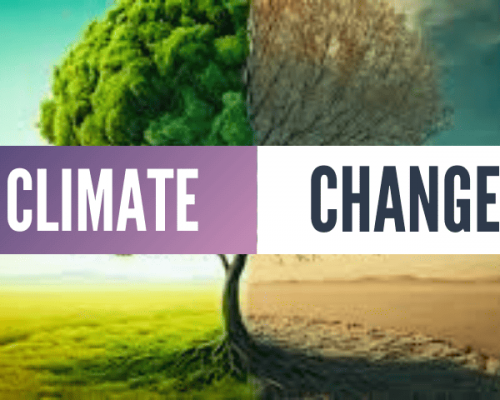As we step into 2024, the digital landscape continues to evolve at an unprecedented pace. With the advent of new technologies, the cybersecurity challenges have become more sophisticated and pervasive. Nowadays, cybersecurity is a strategic business requirement rather than only an IT issue. Organizations and individuals alike face a constant battle against cyber threats that are becoming increasingly sophisticated.
The Evolving Threat Landscape
Ransomware Resurgence: Despite efforts to curb its spread, ransomware remains a significant threat, with attackers finding new ways to breach systems. The rise of “Ransomware-as-a-Service” platforms allows even non-technical criminals to launch attacks, targeting both large organizations and critical infrastructure.
Phishing Goes Phygital: Phishing attacks, blending digital and physical tactics (phygital), have become more sophisticated. Attackers now use social engineering, deepfakes, and AI-generated content to trick individuals into divulging sensitive information.
IoT Vulnerabilities: The proliferation of IoT devices has expanded the attack surface, with many devices lacking basic security measures. This vulnerability presents a prime target for attackers looking to infiltrate networks.
Emerging Threats in the Digital Age
AI-Powered Attacks: Artificial Intelligence (AI) is a double-edged sword. While it can enhance cybersecurity defenses, it also enables attackers to automate attacks, personalize phishing attempts, and bypass security measures more efficiently.
Supply Chain Attacks: Cybercriminals have shifted focus towards the supply chain, targeting less secure elements in the network. These attacks not only disrupt operations but also compromise sensitive data across multiple parties.
Quantum Computing Threats: The potential of quantum computing to break current encryption standards poses a future threat. Organizations must begin preparing for post-quantum cryptography to protect against future quantum-based attacks.
Defensive Strategies for 2024
Zero Trust Architecture: Adopting a Zero Trust approach is essential for modern cybersecurity. This model assumes that threats could be internal or external and verifies every access request regardless of location.
Advanced Threat Detection and Response: Leveraging AI and machine learning for threat detection allows organizations to identify and respond to threats in real-time. Automated response mechanisms can help mitigate damage more quickly.
Cyber Hygiene and Employee Training: Regular updates to security policies, along with comprehensive employee training, are crucial. Educating staff about the latest phishing tactics and promoting good cyber hygiene can significantly reduce the risk of breaches.
The Role of Innovation and Collaboration
Blockchain for Security: Blockchain technology offers potential solutions for enhancing data integrity and securing transactions. Its decentralized nature makes it a valuable tool for protecting data against tampering and fraud.
Public-Private Partnerships: Collaboration between government and private sectors can lead to more robust cybersecurity frameworks. Sharing threat intelligence and best practices can help in creating a more secure digital ecosystem.
Regulatory Frameworks and Compliance
Global Data Protection Regulations: As digital threats evolve, so do the regulatory frameworks designed to protect consumer data. GDPR in Europe, CCPA in California, and other similar regulations worldwide mandate stringent data protection measures.
Compliance as a Competitive Advantage: Adhering to cybersecurity standards and regulations can not only prevent fines but also enhance an organization’s reputation. Demonstrating a commitment to cybersecurity can be a significant differentiator in the digital market.
Facing the digital threat landscape in 2024 requires a multifaceted approach. By understanding the evolving threats, adopting advanced defensive strategies, fostering innovation, and complying with regulatory standards, organizations and individuals can navigate the complexities of cybersecurity. Collaboration across sectors and borders will be pivotal in combating cyber threats, ensuring a safer digital future for all.
As we look ahead, the importance of cybersecurity in our increasingly digital world cannot be understated. The digital threat landscape of 2024 challenges us to be more vigilant, innovative, and cooperative than ever before. By staying informed and prepared, we can hope to stay one step ahead of cyber threats and protect our digital futures.
Advanced Technologies Shaping Cybersecurity
The landscape of cybersecurity is rapidly changing, shaped by the adoption of cutting-edge technologies. These innovations offer promising solutions but also present new challenges and vulnerabilities.
Artificial Intelligence and Machine Learning: AI and ML are revolutionizing cybersecurity, automating the detection of threats and anomalies with unparalleled speed and efficiency. They can predict attacks before they happen, based on the analysis of vast amounts of data. However, these technologies are also being used by cybercriminals to develop more sophisticated malware and attack strategies.
Blockchain Beyond Cryptocurrencies: Originally known for its role in cryptocurrencies, blockchain technology has far-reaching implications for cybersecurity. Its ability to provide secure, transparent, and tamper-proof record-keeping makes it an ideal solution for securing transactions, identity verification, and preventing fraud.
The Internet of Things (IoT): The IoT connects billions of devices, from smart home devices to industrial sensors, creating a network of potential vulnerabilities. Securing these devices requires innovative approaches, as traditional security measures may not be feasible.
Quantum Computing: Quantum computing holds the promise of solving complex problems much faster than current computers. However, it also threatens to break the encryption that secures our digital communications. Preparing for a post-quantum world is a challenge that researchers and cybersecurity experts are already beginning to tackle.
Cybersecurity and Privacy Concerns
As digital technologies permeate every aspect of our lives, privacy concerns have come to the forefront. The vast amounts of data collected by businesses and governments pose significant privacy risks if not properly secured.
Data Privacy Regulations: Regulations such as the General Data Protection Regulation (GDPR) in Europe and the California Consumer Privacy Act (CCPA) have set new standards for data protection. These laws give individuals more control over their personal information and impose heavy penalties on organizations that fail to protect data.
The Rise of Privacy-Enhancing Technologies: Technologies such as homomorphic encryption, which allows data to be processed while still encrypted, offer new ways to protect privacy. These technologies enable the analysis of sensitive data without exposing it, providing a balance between utility and privacy.
The Human Element in Cybersecurity
Despite the focus on technological solutions, the human element remains a critical component of cybersecurity. Social engineering attacks, such as phishing, exploit human psychology rather than technical vulnerabilities.
The Importance of Cyber Hygiene: Simple practices, such as using strong, unique passwords and keeping software up to date, can significantly reduce the risk of a breach. Cyber hygiene should be part of everyone’s routine, just like personal hygiene.
Training and Awareness: Organizations must invest in cybersecurity training for their employees. Regular training sessions can help staff recognize and respond to phishing attempts and other social engineering tactics.
The Future of Cyber Warfare
Cyber warfare has emerged as a significant threat to national security, with nation-states using cyber attacks to target critical infrastructure, steal intellectual property, and influence elections.
Nation-State Cyber Attacks: These attacks are becoming more sophisticated and targeted, with potential to disrupt critical infrastructure, such as power grids, water supplies, and communication networks. The stakes are high, as these attacks can have real-world consequences, including loss of life.
Defensive and Offensive Cyber Strategies: In response to the threat of cyber warfare, countries are developing both defensive and offensive cyber capabilities. This includes not only protecting critical infrastructure but also the ability to launch retaliatory cyber attacks if necessary.
International Cooperation and Norms: To prevent escalation and ensure a stable cyber environment, international cooperation is essential. Developing norms and agreements on the conduct of states in cyberspace can help to reduce the risk of conflict.
Cybersecurity Ethics and Responsibility
As cybersecurity becomes more critical, ethical considerations and the responsibility of various stakeholders come into focus.
Ethical Hacking: Ethical hackers, or white hat hackers, play a crucial role in identifying vulnerabilities before they can be exploited by malicious actors. The ethics of hacking, and how it is conducted, is an area of ongoing debate.
Corporate Responsibility: Companies have a responsibility to protect the data of their customers and employees. This includes investing in robust cybersecurity measures and being transparent about data breaches when they occur.
Government Surveillance vs. Privacy: Governments face the challenge of balancing national security interests with the privacy rights of individuals. The extent of government surveillance is a contentious issue, with concerns about overreach and the potential for abuse.
Navigating the Cybersecurity Landscape in 2024 and Beyond
As we look towards the future, it’s clear that cybersecurity will remain a dynamic and challenging field. The rapid pace of technological innovation, combined with the evolving nature of threats, requires constant vigilance and adaptation.
Adapting to Change: Organizations and individuals must be prepared to adapt their cybersecurity strategies as new technologies emerge and threats evolve. This includes staying informed about the latest trends and best practices in cybersecurity.
Fostering a Culture of Security: Creating a culture of security within organizations, where cybersecurity is everyone’s responsibility, is essential for mitigating risks. This includes not only technical staff but also employees at all levels.
Collaboration is Key: No single entity can face the cybersecurity challenges alone. Collaboration between businesses, governments, and international organizations is crucial for developing effective strategies and sharing information on threats and vulnerabilities.
The digital threat landscape of 2024 presents significant challenges, but also opportunities for innovation and collaboration. By embracing new technologies, prioritizing privacy and ethics, and fostering a culture of security, we can navigate the complexities of cybersecurity and protect our digital future.








